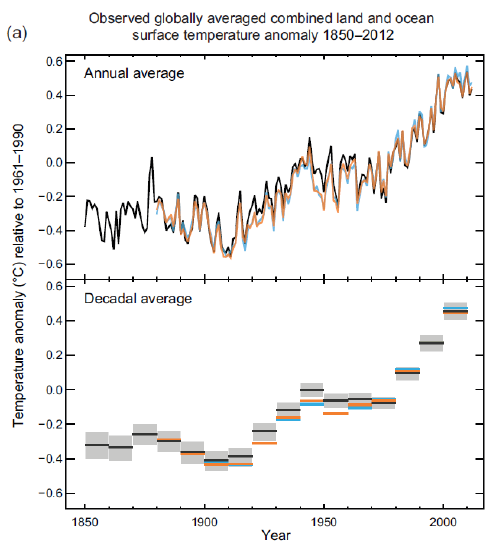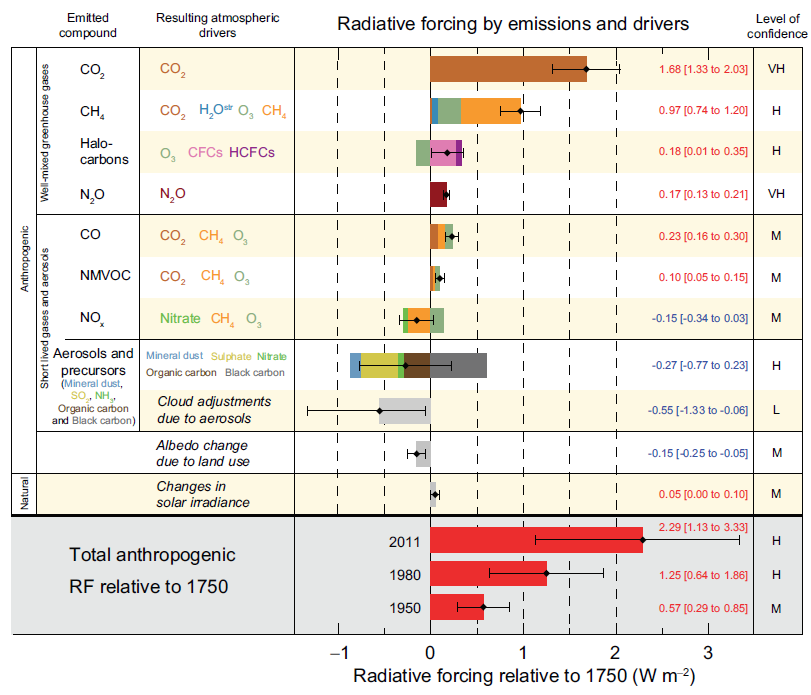Understanding Radiative Forcing: Presentation
- Page ID
- 299367
\( \newcommand{\vecs}[1]{\overset { \scriptstyle \rightharpoonup} {\mathbf{#1}} } \) \( \newcommand{\vecd}[1]{\overset{-\!-\!\rightharpoonup}{\vphantom{a}\smash {#1}}} \)\(\newcommand{\id}{\mathrm{id}}\) \( \newcommand{\Span}{\mathrm{span}}\) \( \newcommand{\kernel}{\mathrm{null}\,}\) \( \newcommand{\range}{\mathrm{range}\,}\) \( \newcommand{\RealPart}{\mathrm{Re}}\) \( \newcommand{\ImaginaryPart}{\mathrm{Im}}\) \( \newcommand{\Argument}{\mathrm{Arg}}\) \( \newcommand{\norm}[1]{\| #1 \|}\) \( \newcommand{\inner}[2]{\langle #1, #2 \rangle}\) \( \newcommand{\Span}{\mathrm{span}}\) \(\newcommand{\id}{\mathrm{id}}\) \( \newcommand{\Span}{\mathrm{span}}\) \( \newcommand{\kernel}{\mathrm{null}\,}\) \( \newcommand{\range}{\mathrm{range}\,}\) \( \newcommand{\RealPart}{\mathrm{Re}}\) \( \newcommand{\ImaginaryPart}{\mathrm{Im}}\) \( \newcommand{\Argument}{\mathrm{Arg}}\) \( \newcommand{\norm}[1]{\| #1 \|}\) \( \newcommand{\inner}[2]{\langle #1, #2 \rangle}\) \( \newcommand{\Span}{\mathrm{span}}\)\(\newcommand{\AA}{\unicode[.8,0]{x212B}}\)
IPCC (Intergovernmental Panel on Climate Change)
- Review of all data relevant to climate change
- Over 800 scientists from almost 40 countries
- Five reports: 1990 – 2014
- Nobel Peace Prize in 2007
- 2014: over 3500 pages

Photo courtesy IPCC



Figure & Text courtesy IPCC Summary for Policymakers
- Radiative Forcing (RF): the affect a factor has on the Earth’s radiation budget
- Factors: atmospheric constituent, land-use change
- Positive RF: the factor warms the atmosphere
- Negative RF: the factor cools the atmosphere
- Relative to 1750 (pre-industrial revolution)

RF = Incoming Radiation – Outgoing Radiation
- CO2 has increased from 280 ppm (1850) to 400 ppm
- RF = 1.68 W m–2
- Today, every m2 of the Earth’s surface atmosphere is warmer by the equivalent of 1.68 W due to CO2
- RF = 1.68 W m–2
- CO2 = 1.68 W m–2
- Other factors: CH4, N2O, CFCs, land use change…
- Overall RF ~ 2.29 W m–2
- Uncertain: 1.13-3.33 W m–2

Text courtesy IPCC Summary for Policymakers

Figure courtesy IPCC Summary for Policymakers

Figure courtesy IPCC Summary for Policymakers

Figure courtesy IPCC Summary for Policymakers

Contributors and Attributions
- Andreas Beyersdorf, California State University San Bernadino (andreas.beyersdorf@csusb.edu)
- Original PowerPoint version of presentation
- Sourced from the Analytical Sciences Digital Library


